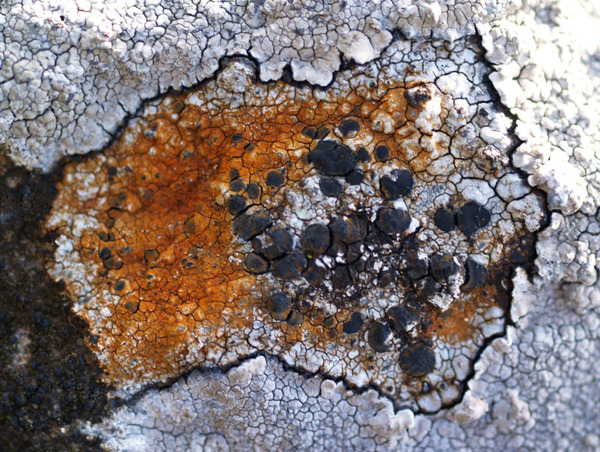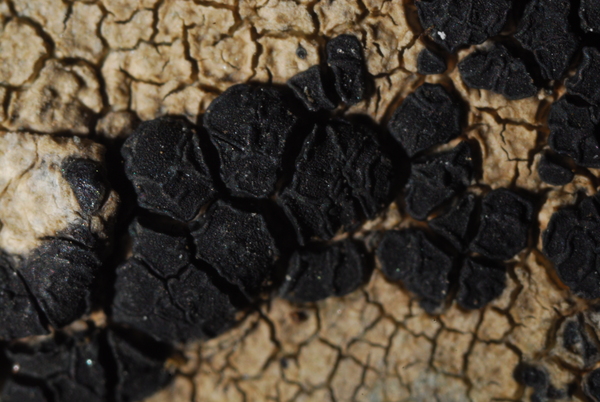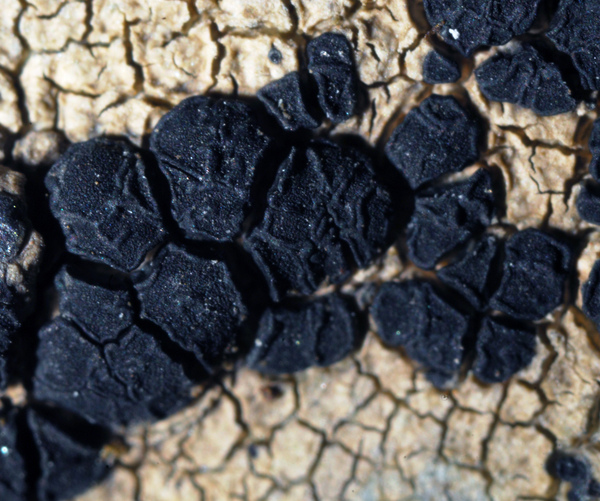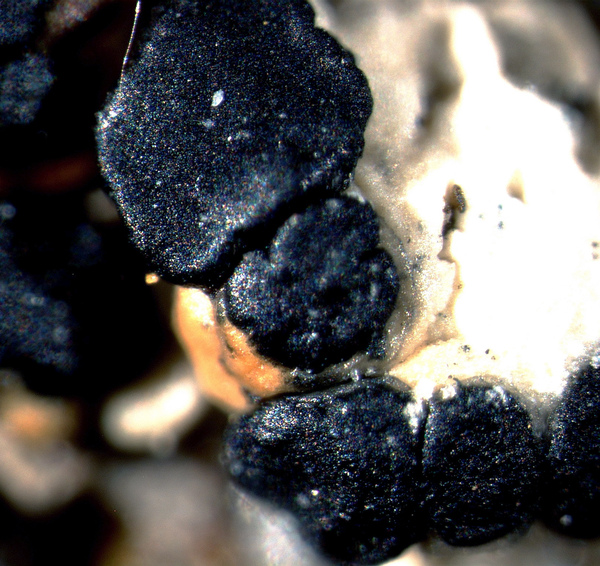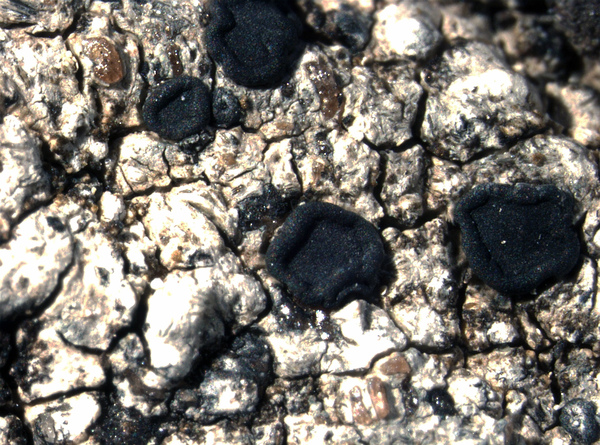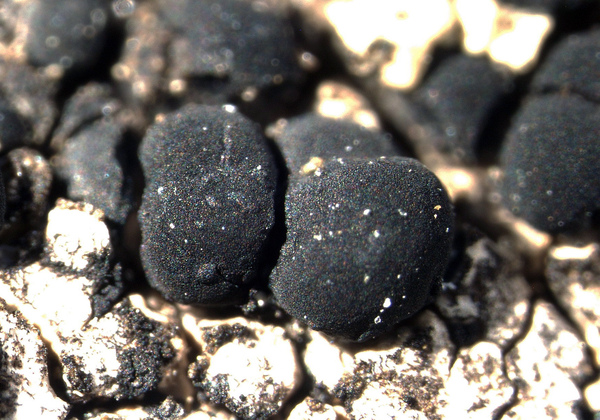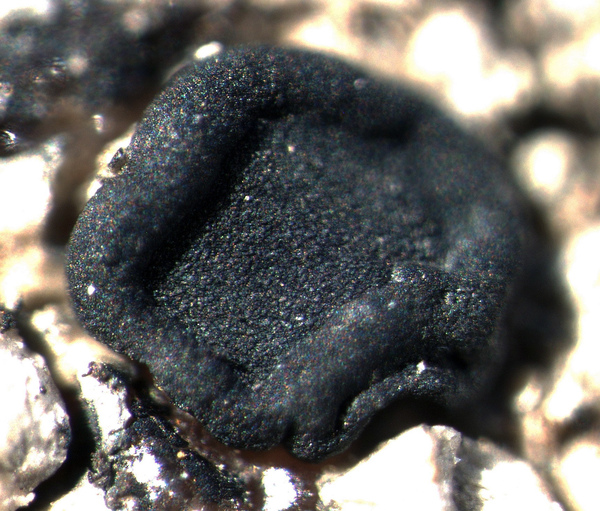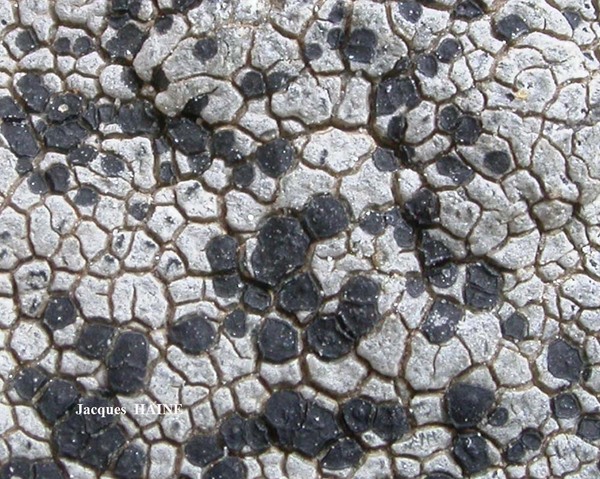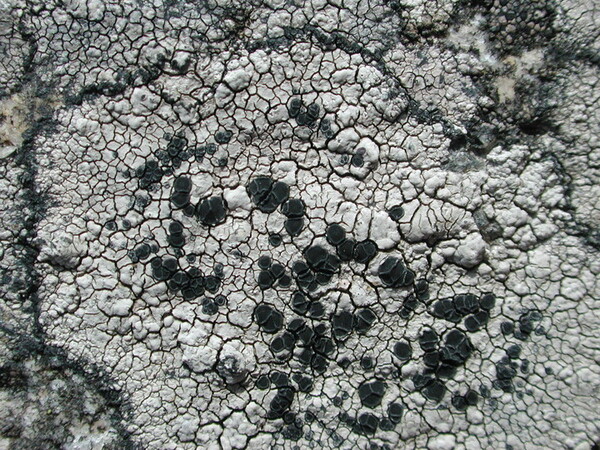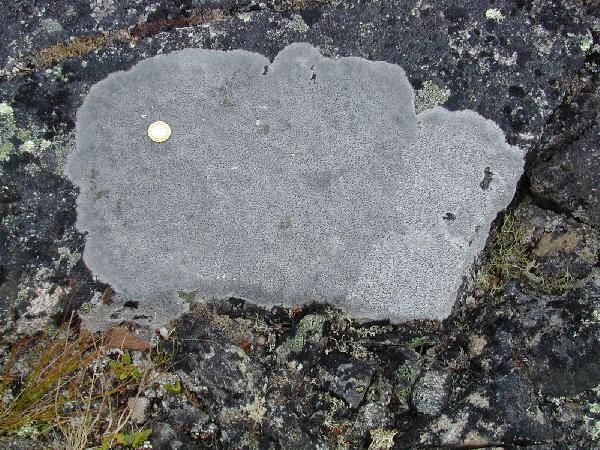Lecidea lapicida (Ach.) Ach. var. lapicida
Meth. Lich.: 37, 1803. Basionym: Lichen lapicida Ach. - Lichenogr. Suec. Prodr.: 61, 1799.
Synonyms: Lecidea contiguella Nyl.; Lecidea declinans (Nyl.) Nyl.; Lecidea declinascens Nyl.; Lecidea dendroclinis Nyl.; Lecidea leptoceramia Anzi; Lecidea scotoplaca H. Magn.; Lecidea subinvoluta Müll. Arg.; Lecidea subplanata Vain.; Lecidea vestrogothica H. Magn.; Lecidella lapicida (Ach.) Körb.
Distribution: N - VG (Castello 2002, Martellos & Castello 2004), Frl (Tretiach & Hafellner 2000), Ven (Hertel & Schuhwerk 2010), TAA (Nascimbene 2003, Lang 2009, Hertel & Schuhwerk 2010, Watson 2014, Nascimbene & al. 2022), Lomb, Piem (Isocrono & al. 2003, 2004, 2006, Isocrono & Piervittori 2008, Giordani & al. 2014), VA (Borlandelli & al. 1996, Piervittori & Isocrono 1997, 1999, Piervittori & al. 2001, Isocrono & al. 2008, Favero-Longo & Piervittori 2009, Matteucci & al. 2015c), Emil (Tretiach & al. 2008, Fariselli & al. 2020), Lig. C - Tosc, Marc (Herb. Ravera 2777), Abr (Recchia & Villa 1996), Sar. S - Cal (Puntillo 1996), Si.
Description: Thallus crustose, episubstratic, rimose to usually areolate, white to bluish grey or sometimes rust-red or ochre (due to incrustations of iron-oxydes), often delimited by a black prothallus. Cortex 10-30 µm thick; medulla white, I+ intensely blue-violet. Apothecia lecideine, black, arising between the areoles, constricted at base, round or more frequently angular, 0.5-1.8(-3) mm across, with a flat to slightly convex, dull, smooth, usually epruinose disc and a persistent proper margin. Proper exciple black-brown in outer part, colourless within, the unpigmented part 30-80(-120) µm wide, the pigmented part K+ and P+ yellow or K-, P-; epithecium greenish black to brownish black, uniformly thick, K+ bright blue-green, N+ purple-red; hymenium colourless, 45-80(-90) µm high, I+ blue; paraphyses usually unbranched and rarely anastomosing, 1.5-2 µm thick at mid-level, the apical cells, swollen, 3.5-5 µm wide; hypothecium pale to medium brown. Asci 8-spored, narrowly clavate, thick-walled, with a K/I+ pale blue tholus and a strongly amyloid, thin apical cushion, surrounded by a I+ blue outer layer, Lecidea-type. Ascospores 1-celled, hyaline, broadly ellipsoid, (8-)9-15(-16) x (4.5-)5-8(-8.5) µm, 1.5-2.9 times as long as wide. Pycnidia black, immersed. Conidia bacilliform, more or less straight, (8-)11-22 x 1-1.3 µm. Photobiont chlorococcoid. Spot tests: K- or K+ yellow, C-, KC-, P- or P+ pale yellow, UV-. Chemistry: stictic acid syndrome.
Note: a circumpolar, arctic-alpine to boreal-montane and cool-temperate species (Hertel 2006) with a broad ecological range, found on hard, acid siliceous rocks, mostly in exposed, windy situations in upland areas, up to the nival belt in the Alps.
Growth form: Crustose
Substrata: rocks
Photobiont: green algae other than Trentepohlia
Reproductive strategy: mainly sexual
Commonnes-rarity: (info)
Alpine belt: extremely common
Subalpine belt: extremely common
Oromediterranean belt: rare
Montane belt: rather common
Submediterranean belt: absent
Padanian area: absent
Humid submediterranean belt: absent
Humid mediterranean belt: absent
Dry mediterranean belt: absent

Predictive model
Herbarium samples
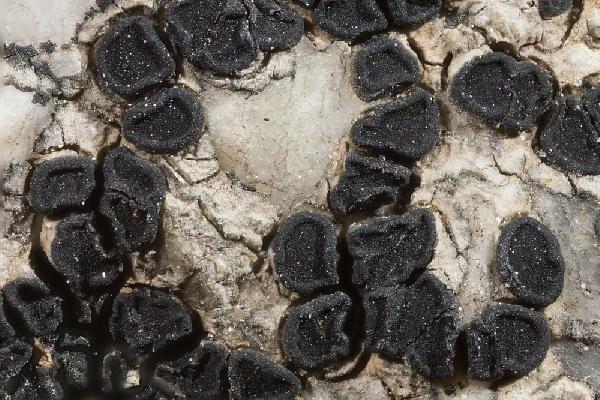
Ulrich Kirschbaum CC BY-SA 4.0 - Source: https://www.thm.de/lse/ulrich-kirschbaum/flechtenbilder
Central Europe; Germany; Hesse: Rhön Mountains.
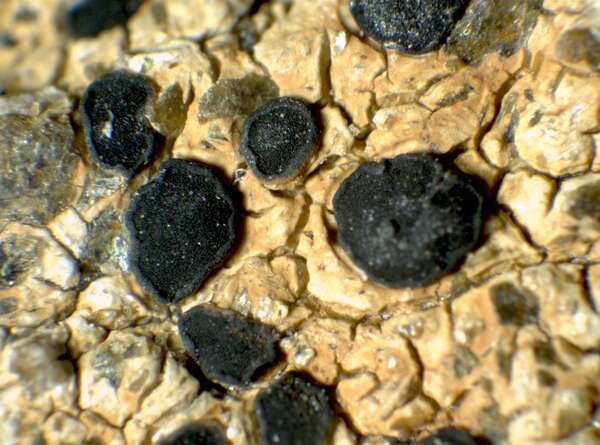

P.L. Nimis; Owner: Department of Life Sciences, University of Trieste
Herbarium: TSB (34349)
2002/01/08
form with rusty thallus
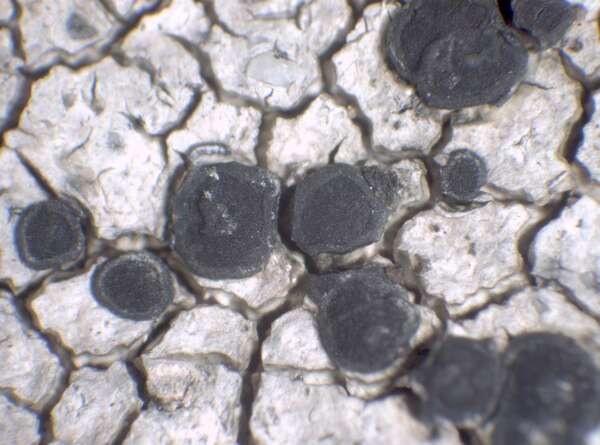

P.L. Nimis; Owner: Department of Life Sciences, University of Trieste
Herbarium: TSB (34349)
2002/05/16
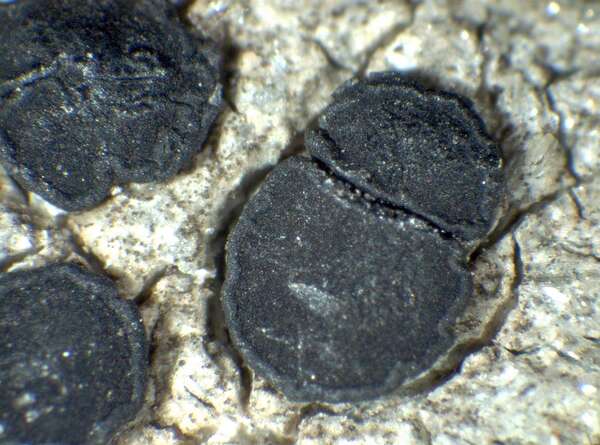

P.L. Nimis; Owner: Department of Life Sciences, University of Trieste
Herbarium: TSB (35362)
2002/07/16
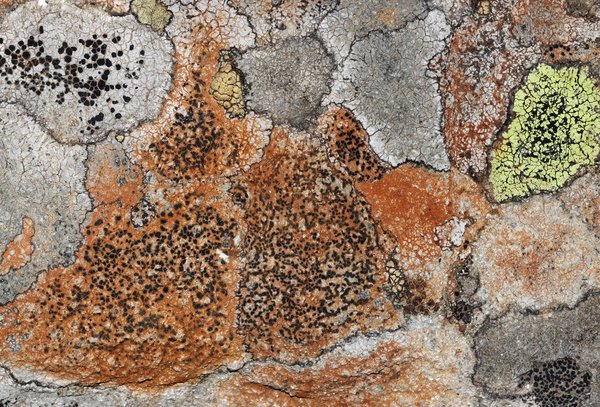
Walter Obermayer CC BY-SA 4.0 - Source: Lichens of Noricum - http://lichens-of-noricum.uni-graz.at/
Austria, Zirbitz
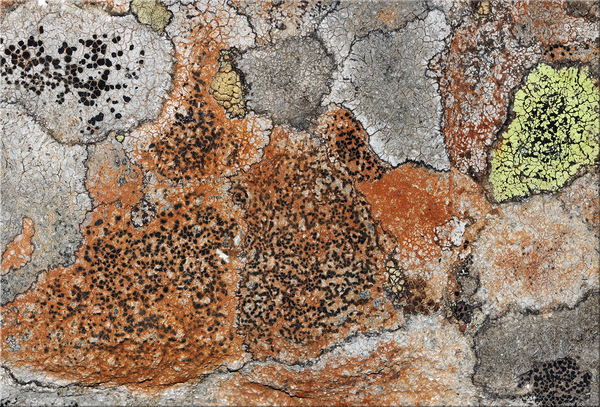
Walter Obermayer CC BY-SA 4.0 - Source: Lichens of Noricum - http://lichens-of-noricum.uni-graz.at/
Austria, Zirbitz

Walter Obermayer CC BY-SA 4.0 - Source: Lichens of Noricum - http://lichens-of-noricum.uni-graz.at/
Austria, Zirbitz
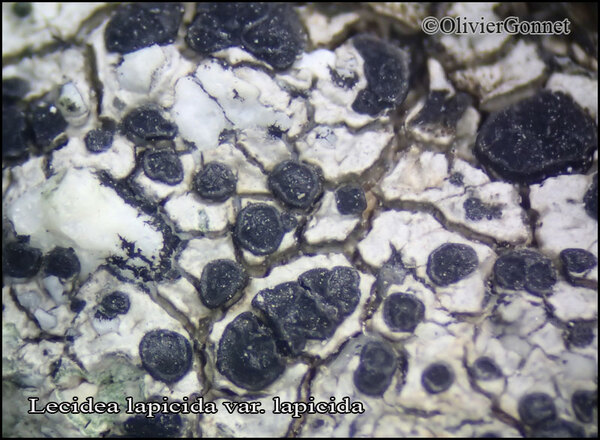
Courtesy Danièle et Olivier Gonnet - Source: https://www.afl-lichenologie.fr/Photos_AFL/Photos_AFL_L/Lecidea_lapicida.htm
France, 4/8/2011 et 24/8/2018 - Mont-Cenis, alt. 2000 m - Savoie
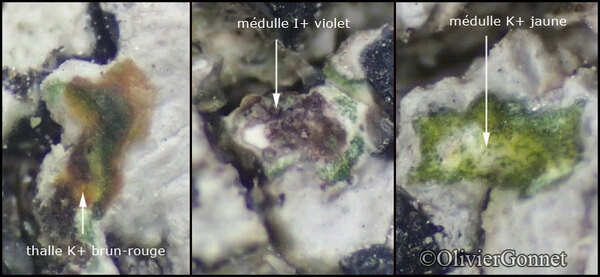
Courtesy Danièle et Olivier Gonnet - Source: https://www.afl-lichenologie.fr/Photos_AFL/Photos_AFL_L/Lecidea_lapicida.htm
France, 4/8/2011 et 24/8/2018 - Mont-Cenis, alt. 2000 m - Savoie
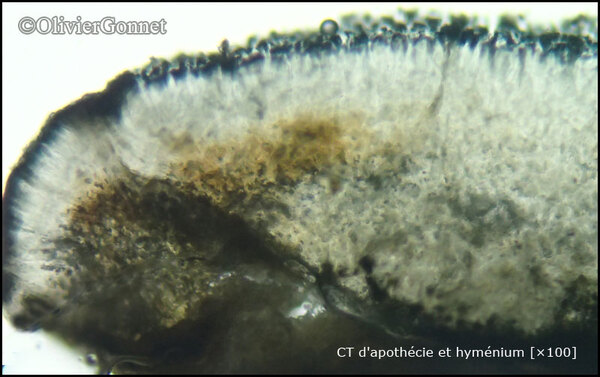
Courtesy Danièle et Olivier Gonnet - Source: https://www.afl-lichenologie.fr/Photos_AFL/Photos_AFL_L/Lecidea_lapicida.htm
France, 4/8/2011 et 24/8/2018 - Mont-Cenis, alt. 2000 m - Savoie
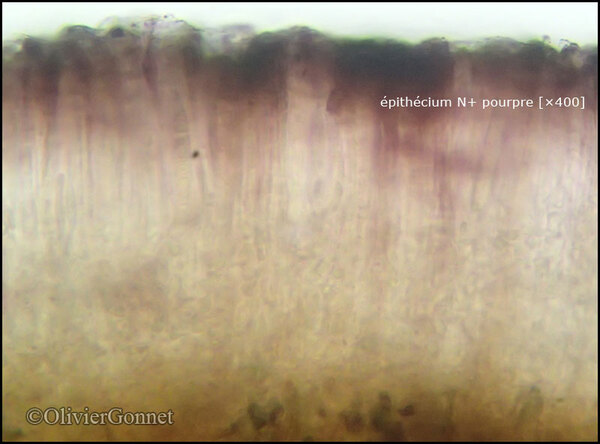
Courtesy Danièle et Olivier Gonnet - Source: https://www.afl-lichenologie.fr/Photos_AFL/Photos_AFL_L/Lecidea_lapicida.htm
France, 4/8/2011 et 24/8/2018 - Mont-Cenis, alt. 2000 m - Savoie
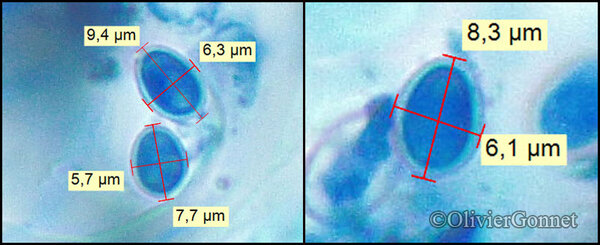
Courtesy Danièle et Olivier Gonnet - Source: https://www.afl-lichenologie.fr/Photos_AFL/Photos_AFL_L/Lecidea_lapicida.htm
France, 4/8/2011 et 24/8/2018 - Mont-Cenis, alt. 2000 m - Savoie

Jacques Haine - Source: http://www.lichensmaritimes.org/index.php?task=fiche&lichen=620&lang=en
France, Queyras
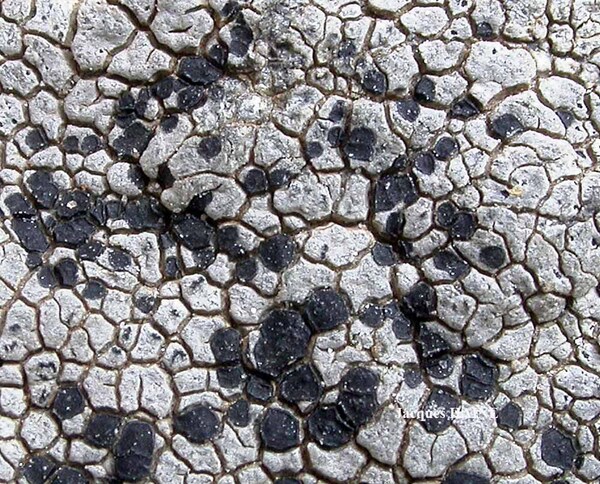
Jacques Haine - Source: http://www.lichensmaritimes.org/index.php?task=fiche&lichen=620&lang=en
France, Queyras
Growth form: Crustose
Substrata: rocks
Photobiont: green algae other than Trentepohlia
Reproductive strategy: mainly sexual
Commonnes-rarity: (info)
Alpine belt: extremely common
Subalpine belt: extremely common
Oromediterranean belt: rare
Montane belt: rather common
Submediterranean belt: absent
Padanian area: absent
Humid submediterranean belt: absent
Humid mediterranean belt: absent
Dry mediterranean belt: absent

Predictive model
| Herbarium samples |

Ulrich Kirschbaum CC BY-SA 4.0 - Source: https://www.thm.de/lse/ulrich-kirschbaum/flechtenbilder
Central Europe; Germany; Hesse: Rhön Mountains.


P.L. Nimis; Owner: Department of Life Sciences, University of Trieste
Herbarium: TSB (34349)
2002/01/08
form with rusty thallus


P.L. Nimis; Owner: Department of Life Sciences, University of Trieste
Herbarium: TSB (34349)
2002/05/16


P.L. Nimis; Owner: Department of Life Sciences, University of Trieste
Herbarium: TSB (35362)
2002/07/16

Walter Obermayer CC BY-SA 4.0 - Source: Lichens of Noricum - http://lichens-of-noricum.uni-graz.at/
Austria, Zirbitz

Walter Obermayer CC BY-SA 4.0 - Source: Lichens of Noricum - http://lichens-of-noricum.uni-graz.at/
Austria, Zirbitz

Walter Obermayer CC BY-SA 4.0 - Source: Lichens of Noricum - http://lichens-of-noricum.uni-graz.at/
Austria, Zirbitz

Courtesy Danièle et Olivier Gonnet - Source: https://www.afl-lichenologie.fr/Photos_AFL/Photos_AFL_L/Lecidea_lapicida.htm
France, 4/8/2011 et 24/8/2018 - Mont-Cenis, alt. 2000 m - Savoie

Courtesy Danièle et Olivier Gonnet - Source: https://www.afl-lichenologie.fr/Photos_AFL/Photos_AFL_L/Lecidea_lapicida.htm
France, 4/8/2011 et 24/8/2018 - Mont-Cenis, alt. 2000 m - Savoie

Courtesy Danièle et Olivier Gonnet - Source: https://www.afl-lichenologie.fr/Photos_AFL/Photos_AFL_L/Lecidea_lapicida.htm
France, 4/8/2011 et 24/8/2018 - Mont-Cenis, alt. 2000 m - Savoie

Courtesy Danièle et Olivier Gonnet - Source: https://www.afl-lichenologie.fr/Photos_AFL/Photos_AFL_L/Lecidea_lapicida.htm
France, 4/8/2011 et 24/8/2018 - Mont-Cenis, alt. 2000 m - Savoie

Courtesy Danièle et Olivier Gonnet - Source: https://www.afl-lichenologie.fr/Photos_AFL/Photos_AFL_L/Lecidea_lapicida.htm
France, 4/8/2011 et 24/8/2018 - Mont-Cenis, alt. 2000 m - Savoie

Jacques Haine - Source: http://www.lichensmaritimes.org/index.php?task=fiche&lichen=620&lang=en
France, Queyras

 INDEX FUNGORUM
INDEX FUNGORUM
 GBIF
GBIF
 DOLICHENS
DOLICHENS

